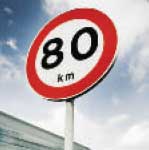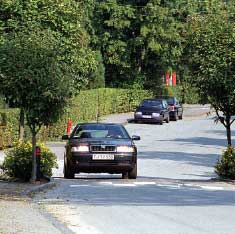|
| Front page | | Contents | | Previous | | Next |
Roads to Healthier Traffic
Roads to fewer accidents
The reason why the number of traffic accidents has fallen in recent years is a combination of a range of efforts. In the last three decades general speed limits have been introduced. Safety
belts and headlights are obligatory. In the same period, the blood alcohol concentration limit was lowered to
0.05 per cent.
Traffic calming – for instance roundabouts, bicycle tracks, and cycle lanes and crossing facilities for bicycles in intersections – has also been a key element in recent years' efforts. In
addition, good results have been achieved by police control of speed limits and information campaigns on the relationship between drunk driving and speed. Also campaigns on the use
of safety belts in cars and bicycle helmets have been successful.
Generally, actions at local level have become more targeted, and many of the Danish municipalities have set up traffic safety action plans, possibly combined with an environmental action
plan.

Photo: BAM
local traffic decisions reduce the number of accidents most
When citizens in a local area take part in decisions on traffic regulation, they assume responsibility. They reduce the
speed in the local area, and thus also reduce the number of accidents. These results were demonstrated in a traffic calming project that was carried out in a residential area (Mørkhøj in
the municipality of Gladsaxe) close to Copenhagen in 1996.
Danish targets
In its action plan ("One accident is one too many") the Road Safety Commission has set up targets for reduction of the number of persons killed or seriously injured in traffic accidents in
Denmark: numbers should be reduced by one third and by two thirds respectively by the end of 2012. Actions will focus on four key elements: speed, intersections, bicycling and drink
driving. See also the figure on page 17.
During the project 30 km/h and 40 km/h speed zones were established. The local residents decided which measures should be used to lower the speed, for instance chicanes and
bumps. Average speeds in the area dropped by 10 km/h, or 20 per cent. After the calming measures were established, 80 per cent fewer persons were injured in a four-year period,
compared to casualties in the four preceding years.

Photo: Scanpix
| Front page | | Contents | | Previous | | Next | | Top |
Version 1.0 June 2004, © Danish Environmental Protection Agency
|